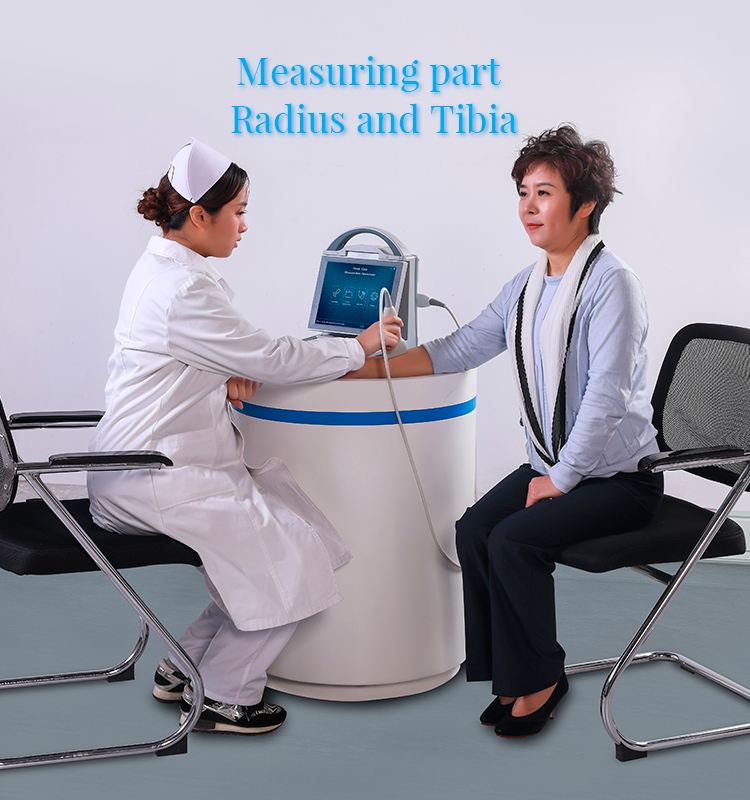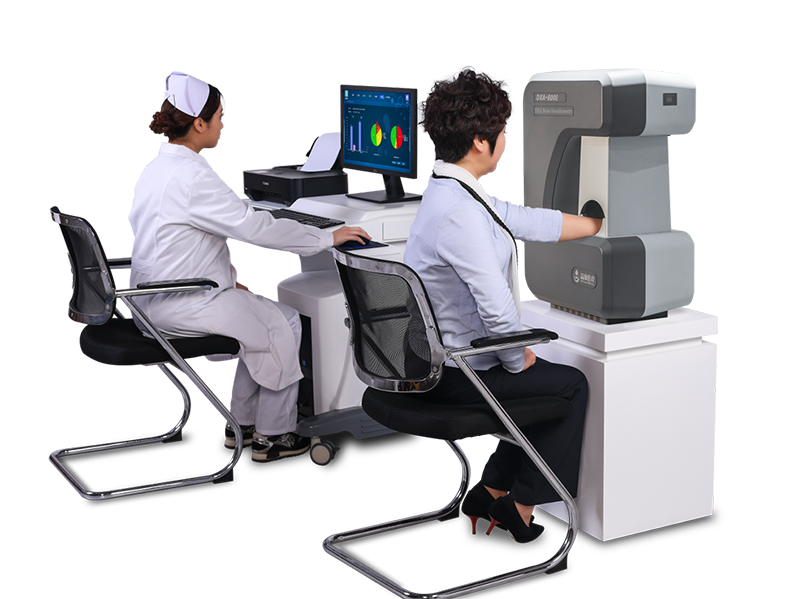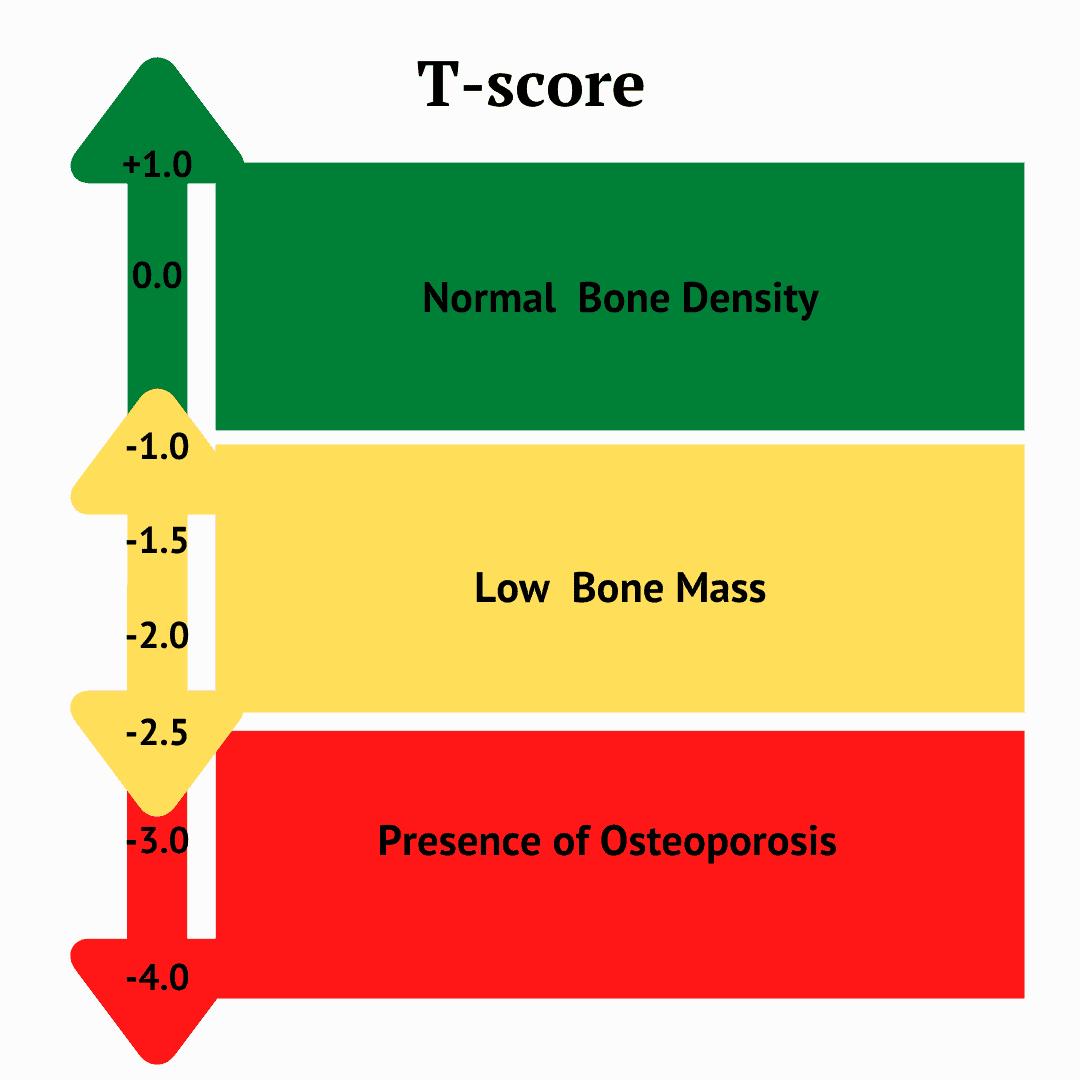The gold standard for bone mineral density adopted by the International Health Organization is the result of dual-energy X-ray testing, which is currently a relatively accurate bone density detection method. The mainstream bone densitometers on the market are divided into two categories: dual-energy X-ray absorptiometry bone densitometer and ultrasound bone densitometer. So there are what differences between these two series, which one has more advantages?
Ultrasound Bone Densitometer
The ultrasonic bone densitometer is an ultrasonic sound beam emitted by an ultrasonic probe. The sound beam penetrates the skin from the transmitting end of the probe and transmits along the axis of the bone to the receiving end of the other pole of the probe. The computer calculates its transmission in the bone. The ultrasonic speed of sound (S0S) was compared with the human group database to obtain the T value and Z value results, so as to obtain the relevant information of bone density through the physical characteristics of ultrasound.


Advantages: The detection process is safe, non-invasive, non-radiation, and simple to operate, and is suitable for screening of bone mineral density in special groups such as pregnant women, children, and middle-aged and elderly people;
Low cost of use.
There are many product models and a wide range of applications, from primary medical institutions to large comprehensive medical institutions.
Disadvantages: The detection accuracy is lower than that of dual-energy X-rays.
Dual Energy X-Ray Absorptiometry Bone Densitometry (DXA Bone Densitometry)
The dual-energy X-ray absorptiometry bone densitometetry is the X-ray tube passing through a certain device to obtain two kinds of energy, namely low-energy and high-energy X-rays. After the X-ray penetrates the body, the scanning system sends the received signal to the computer for data processing to obtain the bone mineral density.
Advantages: The detection accuracy is high, and the World Health Organization (WHO) recommends it as the clinical gold standard for evaluating bone mineral density.
Disadvantages: There is a small amount of radiation, which is generally not used to measure infants and pregnant women;
High cost of use.
Due to price factors, it is usually used in large and medium-sized comprehensive medical institutions.

Xuzhou Pinyuan is a professional manufacturer of bone densitometer, with many product series, including dual-energy X-ray absorptiometry bone densitometer , ultrasound bone densitometer , bone age meter, etc.
Among them, ultrasonic bone densitometers are divided into portable ultrasonic bone densitometer, trolley ultrasonic bone densitometer, children's ultrasonic bone densitometry, etc., which can fully meet the requirements of primary medical institutions to large medical institutions. , high-quality products and services have been well received by users.
Post time: Jun-14-2022
